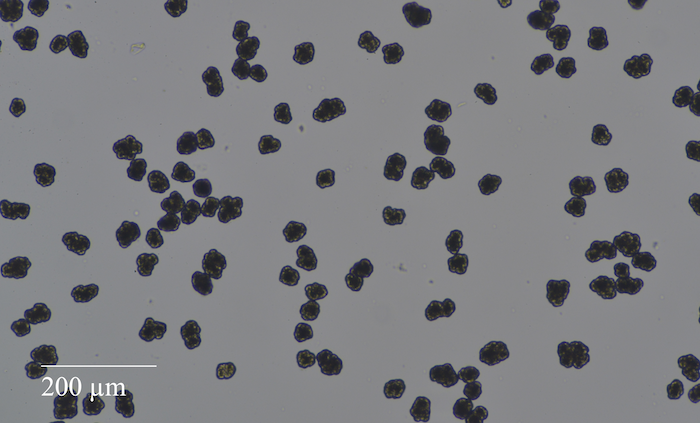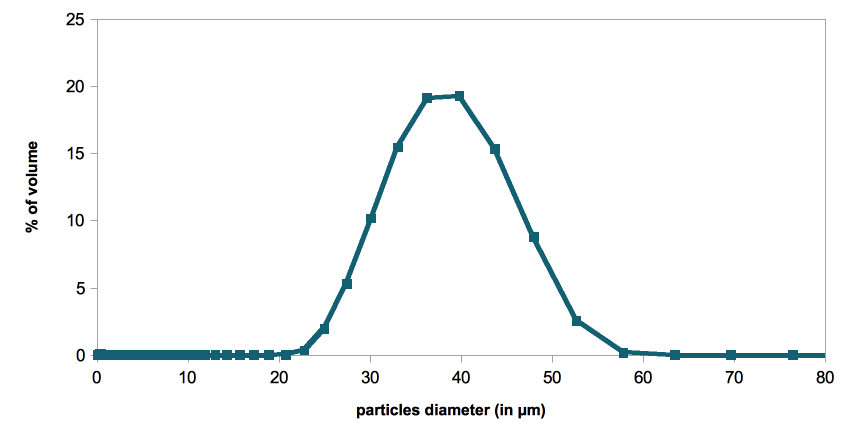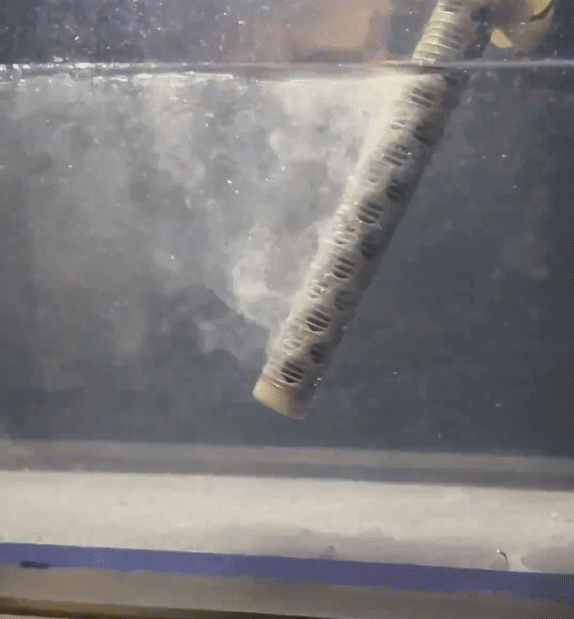Ubertone provides optimal acoustic tracers for laboratory setups.
Tracers are essential
The acoustic profiling method needs scatterers that follow exactly the stream motion.
In some situations water may be naturally contaminated by dust or the flow loop can include a waterfall that generates microbubbles. In both cases, there may be enough scatterers to generate a significant echo for velocity measurement. If the echo signal is too weak, when measuring in clear liquid for example, it is necessary to add seeding particles.
Choosing the right scatterers
The choice of the right tracer can be crucial to the successful acquisition of experimental data.
See FAQ for more details.
Ubertone proposes two methods to seed your setup:
- Polymer particles which Ubertone selected and characterised to fit perfectly to our devices and transducers. These particles can also be used for PIV and LDV techniques.
- Microbubbles generating systems, which are very efficient for some setups. The main advantage is the total eco-friendly aspect.
Ubertone’s particles present a very narrow size distribution with a gaussian shape.
The density is very close to water and leads to a very low settling velocity (see specifications table). This value has been calculated for water and validated experimentally.
This allows the particles to follow the fluid streamlines perfectly and to stay suspended for hours even in still water.
We propose two particle sizes which are adapted for getting backscattering at an emission frequency around 3MHz.
Those particles may also be used for acoustic backscattering calibration.

Main particles characteristics:
| UB-PA40 | UB-PA60 | |
|---|---|---|
| Mean particle size | 40 µm +/- 2 µm | 60 µm +/- 3 µm |
| Particle size range | [30; 50]µm (particle size analyzer: Beckman-Coulter LS13320) | n.a. |
| Size distribution | D10 = 30 µm; D90 = 49 µm | n.a. |
| Particle shape | round but non-spherical | spheroid |
| Density | 1.01 | 1.03 |
| Settling velocity | 0.03 mm/s | 0.09 mm/s |
| Color | White | |
| Melting point | 180°C | |
| Pressure resistance | High pressure resistant | n.a. |
| Chemical resistance |
Resistant to alkaline, hydrocarbons, oils, gazoline's and solvents. Attacked by acids and phenols. |
|

A small concentration is enough
Only a small concentration of particles is needed to obtain a good echo. Typically, 50 mg/L is enough, but this concentration depends on the emitting frequency and the expected exploration depth.
As an example: our particles, at a concentration of 100 mg/L, give a good signal at 3 MHz emission frequency, allowing an up to 50 cm deep profile measurement.
Please keep the environment safe !
Even though these polyamide particles are chemically non-reactive with the environment, these are not natural particles. It is not to be used in installations where the fluid is rejected directly in the environment or in the sewers. If you want to clear the fluid, you will have to filter it.
Another option consists in generating micro-bubbles, which are very efficient for some setups. The main advantage is the total eco-friendly aspect.
One warning has thus to be noted when the flow conditions and transducer position are such as bubbles are accumulating on the active surface of the transducer, impacting greatly the measurement quality. See FAQ for more details.
We present here two microbubbles generation methods:
1. Electrolysis
The electrolysis principle allows the generation of microbubbles by the use of a voltage applied between an anode and a cathode in contact with the water. This technique has been used for decades in hydrodynamic tunnels to generate cavitation seeds.
Building your own custom system is easy, but you should be very careful. WARNING: Do not build your own system if you are not sure about what you are doing as it may be dangerous for surrounding people and material. For example: Applied voltage needs to be limited and some electrodes may emit toxic gases.
Ubertone has developed an efficient microbubble generator of the size of a pen. One unit provides enough microbubbles to seed a flow of 30L/s. For larger flow rate, multiple generators can be used or placed in the streamline of interest. The life time of the microbubble is about 2 minutes, so that the generator can be easily installed several metres upstream.
This microbubble generator is only available for Ubertone instruments users.

2. Cavitation
For installations where nothing can be added into the water, Ubertone can design a custom microbubble generator. Water is extracted from the setup, passes through a cavitation module and is re-injected into the setup. The bubbles generated are about 15µm in diameter and are almost not visible for the eye but provide excellent acoustic scatterers that last about 2 minutes. The cavitation module is designed according to the flow rate of the setup.
User tipp
One warning has thus to be noted when the flow conditions and transducer position are such as bubbles are accumulating on the active surface of the transducer, impacting greatly the measurement quality. See FAQ for more details.
